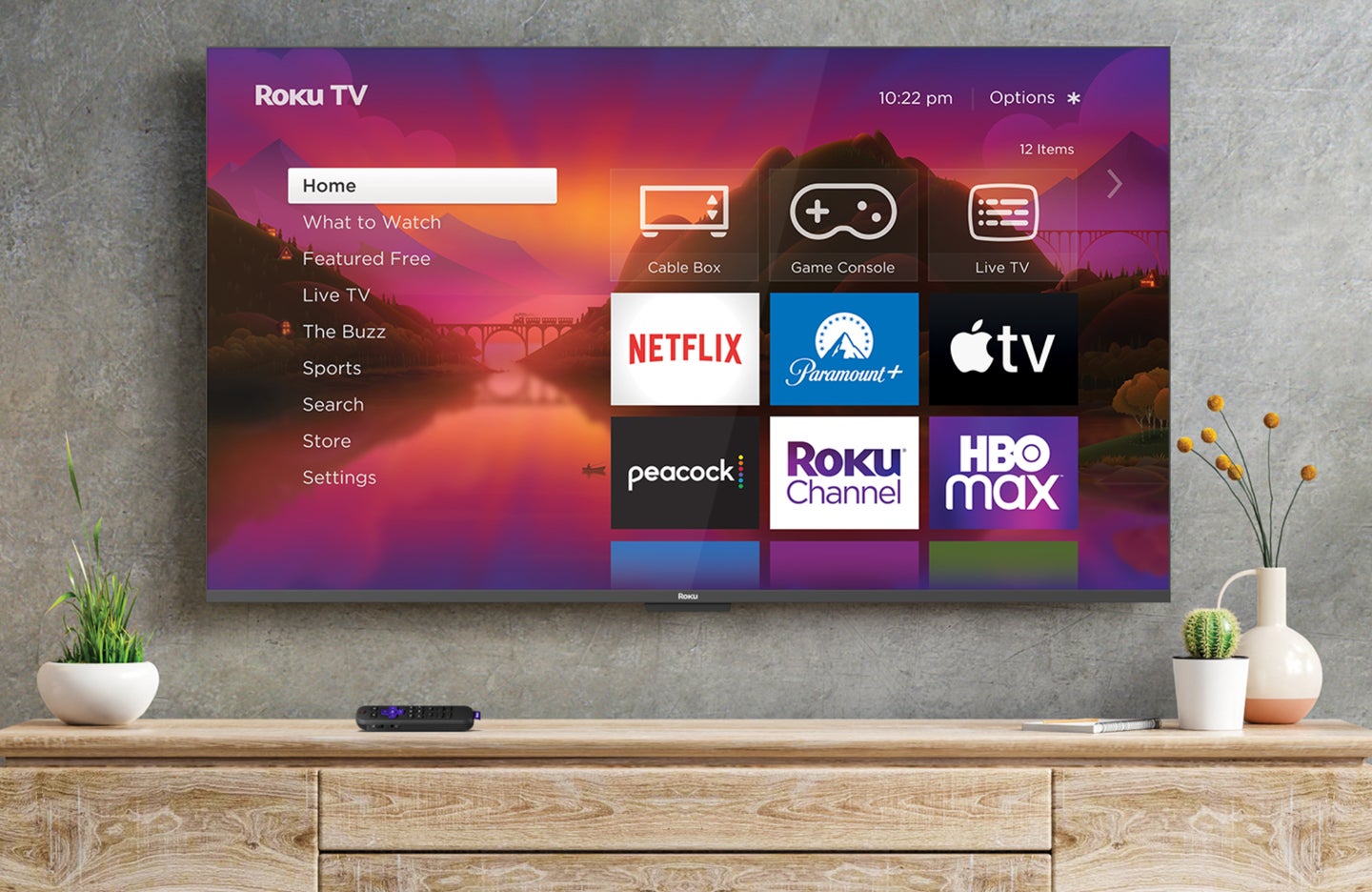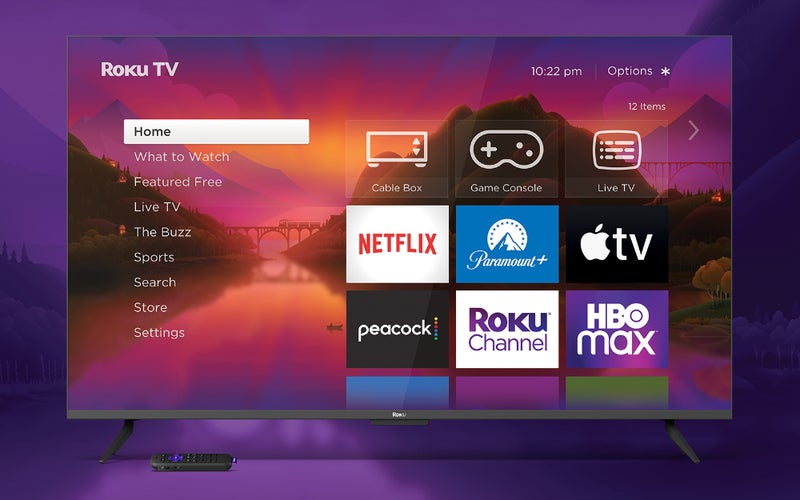
We may earn revenue from the products available on this page and participate in affiliate programs. Learn more ›
Roku, the most popular streaming platform in North America according to Hypothesis Group, announced its first-ever in-house television sets at CES 2023, held Jan. 5-6 in Las Vegas. Previously, Roku has partnered with TCL, Phillips, Westinghouse, and others to ship sets running RokuOS, the company’s operating system. Roku has provided reference hardware designs to third-party companies creating Roku TVs since 2014. Still, by taking hardware design in-house, the company hopes to differentiate itself as a vendor controlling every aspect of its television to maximize performance.
Apple and Google have employed similar tactics when creating products like the iPhone and Pixel with great success, and Amazon launched its first Fire TV last year, so it makes sense that Roku is following suit. The company’s TVs fall into two lines: Select and Plus, which come in sizes between 24 and 75 inches and cost between $119 and $999. Some TVs will have a resolution of 2K (slightly better than 1080P), while others will be 4K. We don’t know whether the difference in resolution will be determined by line or screen size.
Roku Select TVs will come with Roku’s standard remote. In contrast, Roku Plus TVs will come bundled with the company’s “pro” remote, which has a built-in headphone jack for personal listening and two shortcut buttons, which can be programmed open up any app you choose. All of Roku’s TVs will be compatible with Roku’s new Wireless Soundbar, its latest entry in the audio space following the release of its Streambars, subwoofer, and auxiliary speakers.
Roku
We were able to get a sneak peek at Roku’s hardware during a press trip in early December, which included a look at its screen calibration lab, time with an audio engineer, and an overview of the hardware inside one of the TVs. [Full disclosure: Roku paid for our travel and accommodations.] Our time with Roku’s TVs was too brief to make a definitive assessment. Still, with impressively thin bezels to allow for more screen real estate, they did seem much more polished aesthetically—both from an industrial design and technical standpoint—than most first-generation products.
The platform is using reference designs that are shared with partners, but the screen’s calibration and audio hardware and tuning are proprietary, which will allow the Select and Plus TVs to stand out. Roku is certainly excited about its initial foray into hardware, but it’s also released its first-ever OLED TV reference design. OLED TV market penetration continues to rise as prices come down, so the move is welcome if somewhat expected. Roku’s OLED reference design may also telegraph the company’s plans for its TVs in the future, but all of its initial Select and Plus models use LED panels.
The Roku Select and Plus TVs are its biggest dives into hardware, but they build upon the sturdy foundation the company established with its media streamers and speakers. Those are still foundational pillars of Roku’s hardware strategy, with the TV being a natural extension. To be extremely reductive, a smart TV is an operating system with streaming capabilities, speakers, and a screen. Roku’s move combines the consumer hardware we’ve already seen with the screen reference designs it’s been working on for years. It’s rare to see an entirely new entrant in the TV hardware space, and it’ll be interesting to see how much of a splash Roku’s Select and Plus TVs make when released this spring.
The post Roku announces its first TVs at CES 2023 appeared first on Popular Science.
Articles may contain affiliate links which enable us to share in the revenue of any purchases made.
from Popular Science https://ift.tt/RF8HLfg





0 Comments